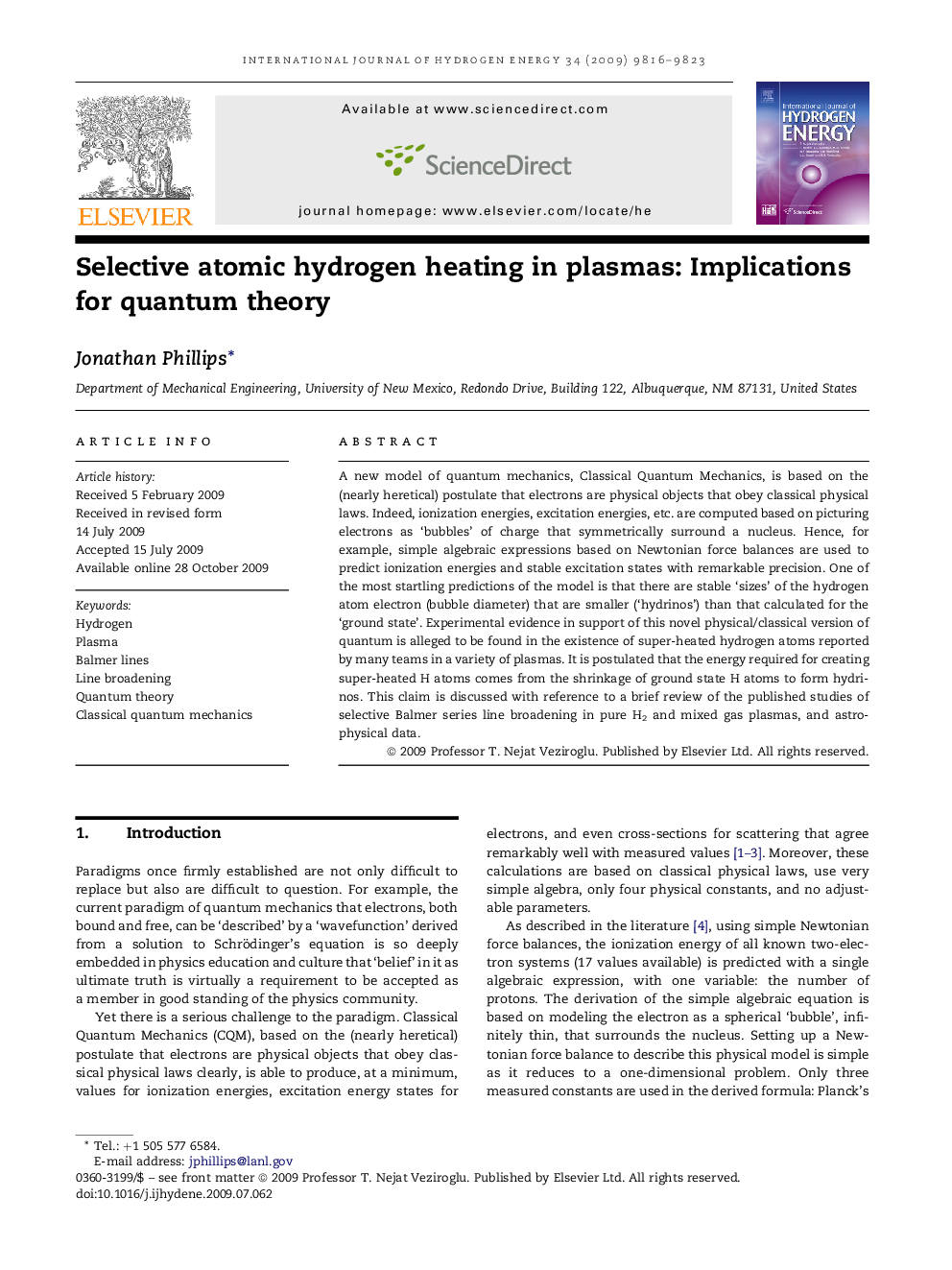| Article ID | Journal | Published Year | Pages | File Type |
|---|---|---|---|---|
| 1278211 | International Journal of Hydrogen Energy | 2009 | 8 Pages |
Abstract
A new model of quantum mechanics, Classical Quantum Mechanics, is based on the (nearly heretical) postulate that electrons are physical objects that obey classical physical laws. Indeed, ionization energies, excitation energies, etc. are computed based on picturing electrons as 'bubbles' of charge that symmetrically surround a nucleus. Hence, for example, simple algebraic expressions based on Newtonian force balances are used to predict ionization energies and stable excitation states with remarkable precision. One of the most startling predictions of the model is that there are stable 'sizes' of the hydrogen atom electron (bubble diameter) that are smaller ('hydrinos') than that calculated for the 'ground state'. Experimental evidence in support of this novel physical/classical version of quantum is alleged to be found in the existence of super-heated hydrogen atoms reported by many teams in a variety of plasmas. It is postulated that the energy required for creating super-heated H atoms comes from the shrinkage of ground state H atoms to form hydrinos. This claim is discussed with reference to a brief review of the published studies of selective Balmer series line broadening in pure H2 and mixed gas plasmas, and astrophysical data.
Related Topics
Physical Sciences and Engineering
Chemistry
Electrochemistry
Authors
Jonathan Phillips,
